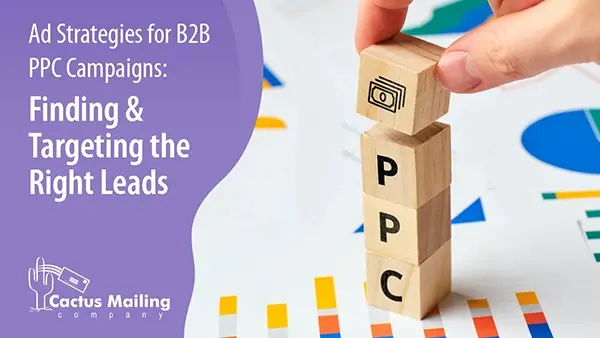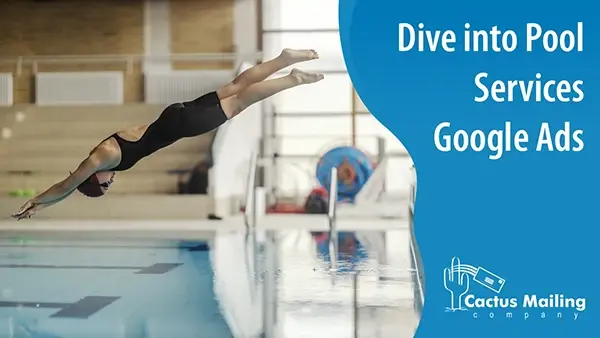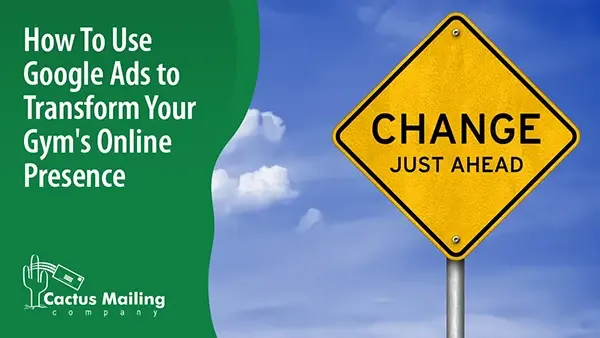We Are Here to Help!
What to Expect from Us:
No Pressure, Just Service!
Get no obligation pricing details and strategies that will work for your business.
Navigating the complexities of Google PPC (Pay-Per-Click) campaigns can be a challenging yet rewarding endeavor, especially in the B2B (Business-to-Business) landscape. Practical insights into optimizing Google PPC campaigns for B2B businesses, focusing on identifying and targeting the right leads, will help B2B marketers fine-tune their digital marketing for maximum efficiency and impact. Explore effective strategies to enhance lead generation and ROI of B2B PPC marketing efforts in your B2B company.
Types of B2B Google Ads Campaign
Google provides several types of Pay-Per-Click (PPC) ads that are commonly used by B2B marketers. By leveraging these different ad types, B2B businesses can create a comprehensive PPC strategy that addresses various stages of the buyer’s journey. From initial brand exposure through a display ad to engaging interested prospects with search and remarketing ad, and showcasing products with Google Shopping, each ad type offers unique advantages to effectively target and convert the right B2B leads. These include:
Search Ads
These are perhaps the most well-known Google PPC ads, appearing on Google's search results pages. Advertisers bid on keywords, and their B2B PPC ads show up when users search for those terms. This is highly effective for targeting potential customers who are actively searching for specific products or services.
- Targeting the Research Phase: B2B businesses can use search ads to target potential clients who are actively researching products or services in their industry. By bidding on specific, industry-relevant keywords, businesses can capture the attention of decision-makers at the crucial research stage.
- Intent-Based Targeting: These search ads are particularly effective because they target users based on their search intent, which means businesses can tailor their ads to match the specific needs and questions that potential clients have.

Display Ads
Google's Display Network reaches over 90% of internet users worldwide. A display ad can appear on a vast network of websites across the internet, not just on Google's search results pages. These B2B Google ads campaign can be in various formats, including text, image, rich media, and video ads.
- Brand Awareness: Display ads are excellent for building brand awareness among a broader audience. B2B companies can use them to introduce their brand or product to potential clients who may not be actively searching for their services but are browsing related online content.
- Targeting via Interests and Demographics: Through Google's extensive data, businesses can target audiences based on specific interests, demographics, and even online behaviors, ensuring that their ads are shown to relevant professional audiences.
Remarketing Ads
Google allows advertisers to show ads to users who have previously visited their website. These ads can appear both in search results and on the Google Display Network. Remarketing is a powerful way to engage with potential customers who have already shown interest in your products or services.
- Engaging Previous Visitors: Remarketing allows B2B companies to target users who have previously visited their site but did not convert. This is crucial in the B2B space where the sales cycle is often longer and more complex.
- Tailored Messaging: Businesses can customize their PPC ad messages based on the specific pages or products that users viewed, making the ads more relevant and increasing the chances of conversion.
Google Shopping Ads
Google Shopping ads are ideal for businesses selling physical products. They appear at the top of the Google search results page and showcase products with images, prices, and a business name. This type of Google ad is highly visual and can quickly grab the attention of their target audience.
- Product Showcase for Immediate Purchase: For B2B businesses that sell physical products, Google Shopping ads can showcase products directly in search results. This is beneficial for products that are frequently searched for and purchased by businesses.
- Detailed Product Information: These ads provide detailed information at a glance, like price and product description, making it easier for procurement professionals or business owners to make informed purchase decisions.
Each of these PPC ad types serves different purposes and can be effective at various stages of the customer journey, from awareness to consideration to conversion. Google’s extensive reach and advanced targeting capabilities make it a favored platform for B2B PPC advertising.
Best Practices for Google PPC for B2B Marketing
A well-thought-out PPC strategy helps ensure that your marketing efforts are visible and impactful and result in high-quality leads. To help you maximize your PPC campaigns, employ best practices for leveraging Google PPC in the B2B arena. Whether you're new to Google PPC or looking to refine your existing strategies, these insights and tips will equip you with the knowledge to reach and engage your B2B audience effectively, driving both leads and revenue for your business.

Crafting a B2B Ad Message
Your ad copy should be compelling and tailored to the needs of your B2B target audience. Strike the right balance between emotional and rational appeals to resonate with business decision-makers. Remember, in the B2B space, your audience seeks solutions to improve their business operations, enhance efficiency, or drive growth. Your ad copy should reflect these needs and demonstrate how your product or service meets them effectively.
- Understand Your Audience's Pain Points: Identify your target audience's specific challenges, needs, and goals. Research industry trends, common obstacles they face, and the solutions they seek.
- Highlight Unique Value Propositions: Communicate what differentiates your product or service from competitors. Emphasize unique features, benefits, and the specific advantages your solution offers to the B2B market.
- Use Clear and Concise Language: Avoid jargon and overly technical language. Your message should be easily understandable, focusing on how your product or service can solve problems or improve business operations.
- Incorporate Emotional Appeal: Even in B2B marketing, emotional appeal is essential. Address how your solution can alleviate stress, save time, or improve overall business health. Storytelling can be a powerful tool, perhaps showcasing a success story or a case study.
- Include Rational and Logical Arguments: B2B decisions are often driven by logic and ROI. Provide clear, data-backed arguments about the effectiveness of your product. It could include statistics, case studies, testimonials, or ROI calculators.
Ad Campaign and Landing Pages that Convert
A well-designed landing page is critical in converting visitors into leads. Your landing page should directly continue your ad's promise, delivering what you advertised. Key elements include a clear headline, succinct copy, engaging visuals, and a strong call-to-action (CTA). The design should be clean and professional, reflecting your brand's identity and instilling trust in your visitors. Ensure the page is optimized for various devices, as many B2B decision-makers use mobile devices for business purposes. A/B testing different landing page elements, like headlines, CTA buttons, and images, can provide valuable insights into what resonates best with your audience.
Utilizing Social Media Platforms
B2B companies use social media platforms for direct advertising, from building brand awareness to engaging with potential leads. The choice of platform should align with where your target audience spends their time. LinkedIn, for instance, is a powerhouse for B2B marketing due to its professional user base. Here, you can leverage paid advertising and organic strategies like posting insightful articles, participating in discussions, and networking with industry leaders. On platforms like X (formerly Twitter) and Facebook, focus on creating and publishing shareable industry-relevant content. Remember, the marketing goal in social media is to start conversations and build relationships, which can eventually lead to conversions.
Effective Keyword Strategies for B2B PPC Advertising
Implementing keyword strategies for a B2B PPC campaign requires a subtle approach, focusing on reaching decision-makers and influencers within targeted industries. A B2B marketer should carefully implement strategies tailored to create effective B2B Google ads. An effective B2B PPC will attract and convert prospects actively seeking solutions, reaching the most relevant audience, maximizing ROI, and continuously adapting a B2B Google Ads campaign for higher conversion rates. Here's how to effectively implement each strategy:
- Industry-Specific Keywords: Select relevant keywords and organize them into an ad group for your business sector. Focus on terms and phrases commonly used within the industry, as well as those that address your business clientele's unique challenges and needs.
- Use of Long-Tail Keywords: These are longer, more specific phrases, less competitive, but highly targeted keyword phrases. They are particularly effective in reaching decision-makers searching for particular solutions or products. Tools like Moz’s Keyword Explorer can help identify long-tail keywords based on semantic relevance.
- Negative Keywords: Start by listing terms that are similar to your keywords but not relevant to your business. For instance, if you offer high-end B2B solutions, you might want to add “cheap” or “free” as negative keywords.
- Competitor Keyword Analysis: Use tools like SEMrush or Google Ads’ Auction Insights to analyze the keywords your competitors are targeting. Look for both high-performing keywords and gaps that you can exploit.
- High-Intent Keywords: Identify and utilize terms used by prospects further along in the buying cycle and who actively seek solutions. These keywords can lead to higher conversion rates as you reach users ready to engage in business transactions.
- Match Type Selection: Selecting the appropriate match types for your keywords in a B2B PPC campaign impacts how broadly your ads will be shown relative to user searches. The right balance needs to be struck between reaching a broad audience and ensuring that your ads are shown to relevant, high-quality leads.
Enlist a B2B PPC agency like WebFX to help you.
Campaign Management Strategies
A successful B2B Google PPC campaign is characterized by its cohesive integration of various strategies aimed at achieving a singular goal: effectively reaching and influencing the target business audience. At its core, a PPC campaign artfully combines precise audience targeting, engaging content, and strategic PPC ad placements to attract the right professionals. Once the interest is piqued, it engages B2B buyers through compelling messaging and relevant offers tailored to their specific industry needs and professional interests. The seamless blend of attraction, engagement, and conversion tactics ensures the campaign reaches and resonates with the intended B2B business.

Audience Targeting and Segmentation
Managing a B2B Google PPC campaign effectively begins with categorizing your audience based on specific criteria such as industry type, company size, and job roles. Doing so ensures that your ads reach the most relevant and potentially responsive audience segments.
Leverage Google's integration with LinkedIn to refine your targeting further as it pinpoints professionals based on their professional profiles, ensuring your LinkedIn ad reaches individuals with specific job titles, skills, or industry connections. This level of precision is particularly effective in B2B marketing, where specific professional demographics are often the primary target.
Conversion Optimization
The ultimate goal of any PPC campaign is conversion. To optimize for this, focus on landing page design and the strategic use of lead magnets. Your landing is a potential client's first impression after clicking on your B2B Google Ads, so it should be professional, clear, and value-focused. Convey the benefits of your product or service and encourage a specific action, whether signing up for a demo, downloading a whitepaper, or making a contact inquiry.
You should also incorporate valuable content into your advertising strategy as lead magnets. It could be in the form of in-depth guides, industry reports, or exclusive webinars. By offering something of value, you're more likely to engage potential clients and collect their contact information for future nurturing and conversion efforts.
Performance Monitoring and Optimization
The ongoing process of monitoring and optimizing B2B PPC campaigns includes regularly analyzing campaign performance, adjusting bids, refining keyword strategies, and updating ad copy. Continuous optimization is crucial for adapting to market changes and maximizing the return on investment of your PPC efforts.
- Performance Analysis: Regularly analyze key metrics such as click-through rate (CTR), conversion rate, and cost per conversion. Google Analytics can provide data to understand which keywords and strategies are most effective.
- Adapt to Trends: Stay updated with industry trends and changes in search behavior. Adapt your keyword strategies accordingly to maintain campaign relevance and effectiveness.
- Machine Learning Tools: Use machine learning tools to analyze large sets of PPC data for insights and predictive analytics on keyword performance.
- Integrated Analytics: Integrate your PPC campaigns with advanced analytics platforms for deeper analysis and cross-channel insights.

Conclusion
Google PPC for B2B marketing is challenging yet rewarding. These strategies offer a powerful tool for B2B marketers to fine-tune their digital marketing efforts, maximizing efficiency and impact. Each aspect contributes to a successful PPC campaign, from understanding campaign types to crafting compelling ad messages, optimizing landing pages, and utilizing social media. Effective campaign management, audience targeting, and continuous optimization enhance the potential for success in the dynamic world of B2B marketing. Armed with the knowledge and strategies outlined here, B2B marketers are well-equipped to not only navigate these complexities but also to harness the full potential of Google PPC to target suitable leads and convert them into revenue and business growth.
Our postcards have helped various businesses get leads, boost brand awareness, and grow revenue. Let us help you create a B2B marketing postcard design that can achieve your marketing goals!

 Cactus Mail Team: Apr 22, 2024
Cactus Mail Team: Apr 22, 2024



